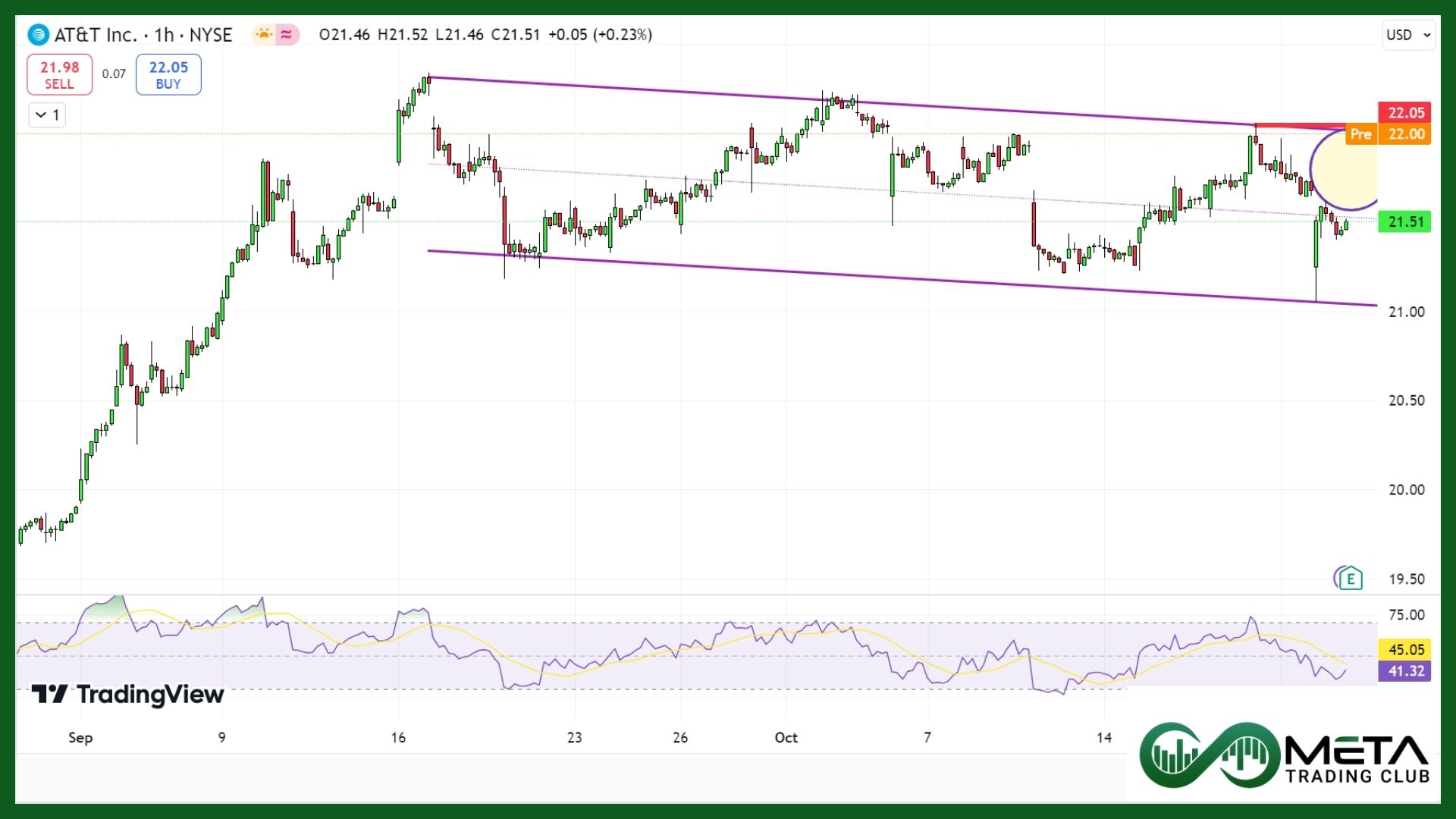AT&T Inc., commonly known as AT&T, is a prominent American multinational conglomerate headquartered in Dallas, Texas. Established in 1885 as the American Telephone and Telegraph Company, AT&T has evolved into one of the world’s largest telecommunications corporations. The company offers a broad range of services, including wireless communication, broadband, and satellite TV, and is known for its extensive network coverage and high-speed internet services.
In recent years, AT&T has focused on expanding its 5G network and fiber internet services to stay at the forefront of technological advancements. Additionally, they have strategically sold their 70% stake in DirecTV to TPG to concentrate on core business areas. AT&T has shown resilience by exceeding wireless subscriber estimates, although it faced a significant goodwill impairment charge related to its business-wireline unit. AT&T’s corporate vision emphasizes connecting people to greater possibilities with expertise, simplicity, and inspiration, aiming to enhance connectivity in various domains, from smart homes to remote healthcare.
AT&T Fiscal Q3 2024
AT&T Inc. (NYSE: T) reported its third-quarter results, showing consistent growth in Mobility services and broadband revenues as it continues to attract high-quality, converged customers in both 5G and fiber. The company has reaffirmed its full-year 2024 consolidated financial guidance following its ongoing performance.
AT&T Third-Quarter Results:
- Revenue Decline: Total revenue was $30.2 billion, which was 0.5% lower than the previous year’s $30.4 billion.
- Adjusted EPS: $0.60 which beat market expectations.
- Operating income: $2.1 billion; adjusted operating income: $6.5 billion.
- Net Loss: AT&T reported a net loss of $0.2 billion for the quarter, compared to a profit of $3.4 billion in the same quarter last year.
- Capital expenditures: $5.3 billion; capital investment: $5.5 billion.
- Free cash flow: $5.1 billion, down $0.1 billion year over year, up $2.4 billion year to date compared to the same period in 2023.
- One-Time Charges: The company took a $4.4 billion impairment charge, which included a non-cash goodwill impairment and other items.
- Lower Business Wireline Service Revenues: There was a decline in business wireline service revenues and mobility equipment revenues due to lower sales volumes.
Third-Quarter Highlights:
- Subscriber Growth: AT&T added 403,000 postpaid phone net additions and 226,000 AT&T Fiber net additions, marking the 19th consecutive quarter of over 200,000 new fiber customers.
- Revenue Growth in Key Segments: Mobility service revenue increased by 4.0% year-over-year to $16.5 billion, and consumer broadband revenue grew by 6.4% year-over-year to $2.8 billion.
- Fixed Wireless Subscriber Target Achieved Early: AT&T met its fixed wireless subscriber target 15 months ahead of schedule.
- Positive Cash Flow: The company generated $10.2 billion in cash from operating activities, with a free cash flow of $5.1 billion.
Outlook of 2024:
- Wireless service revenue growth: ~3%
- Broadband revenue growth: 7%+
- Adjusted EBITDA growth: ~3%
- Free cash flow: $17-$18 billion
- Adjusted EPS: $2.15-$2.25
Board Statements
AT&T CEO John Stankey stated, “We delivered another strong and consistent quarter, furthering our leadership in converged 5G and fiber connectivity. Despite severe weather and a work stoppage in the Southeast, this is our 19th straight quarter of adding more than 200,000 new AT&T Fiber customers. We continue to grow our largest business—Mobility—the right way with what we expect will be industry-leading postpaid phone churn for the 13th time in 15 quarters. We are investing at the top of the industry, reducing debt and growing free cash flow year to date. These solid results give us confidence in reiterating our full year consolidated financial guidance.”
Impact on the Stock Market
Following the release of AT&T’s Q3 2024 earnings report, the company’s stock saw a 3.1% increase in premarket trading. This positive movement was driven by AT&T exceeding wireless subscriber estimates and the steady adoption of its higher-tier unlimited plans. Investors responded favorably to the strong subscriber growth and the company’s ability to attract high-quality, converged customers in both 5G and fiber.















